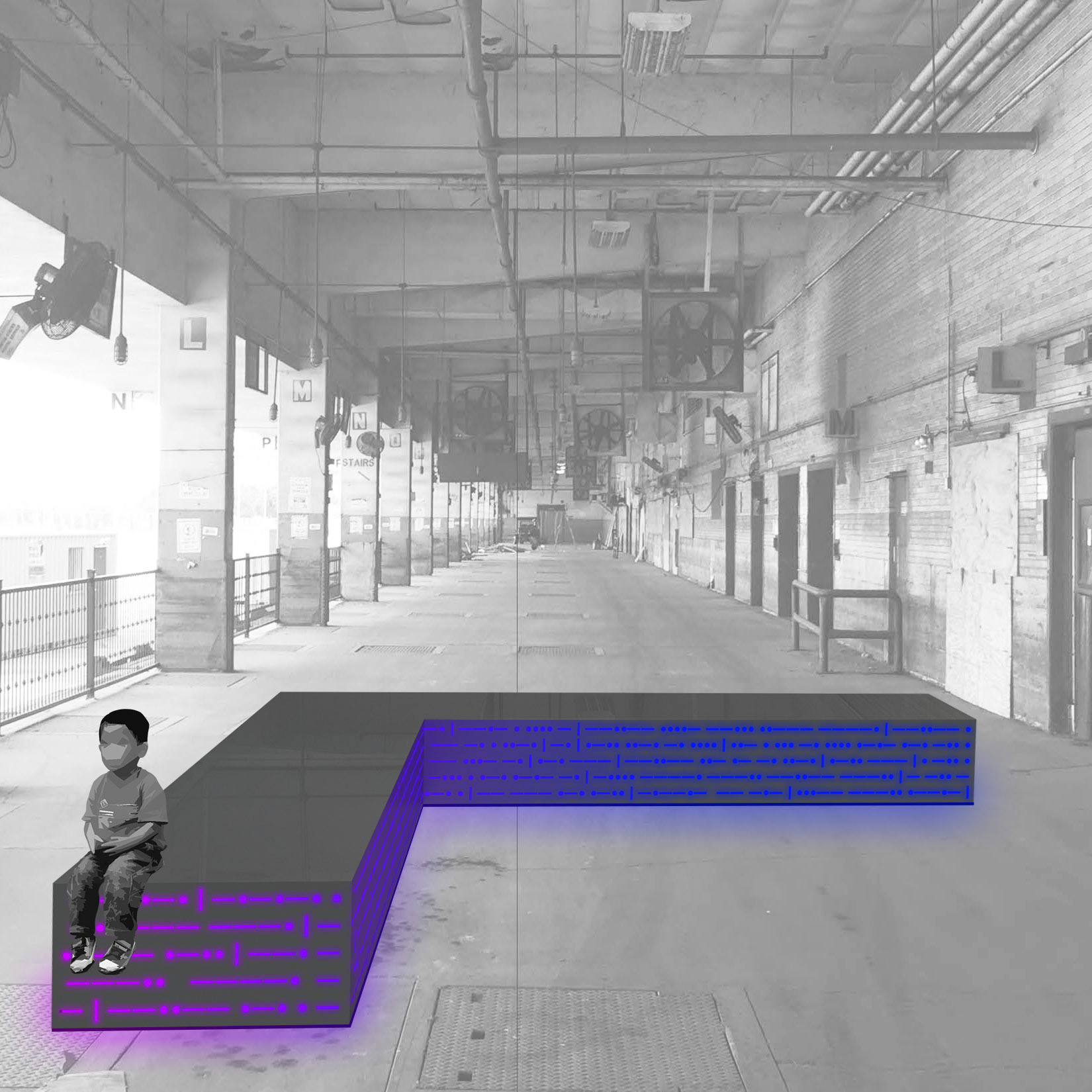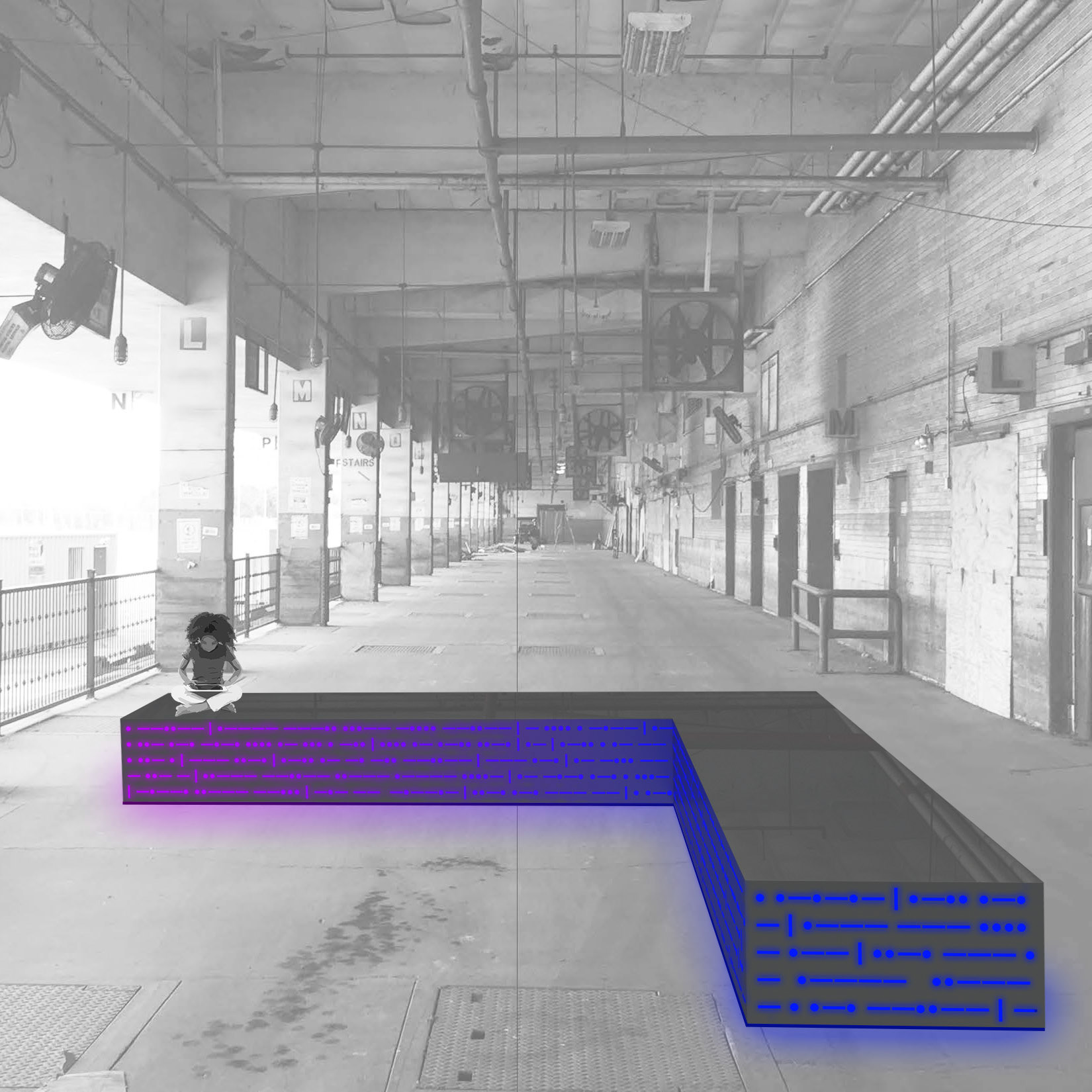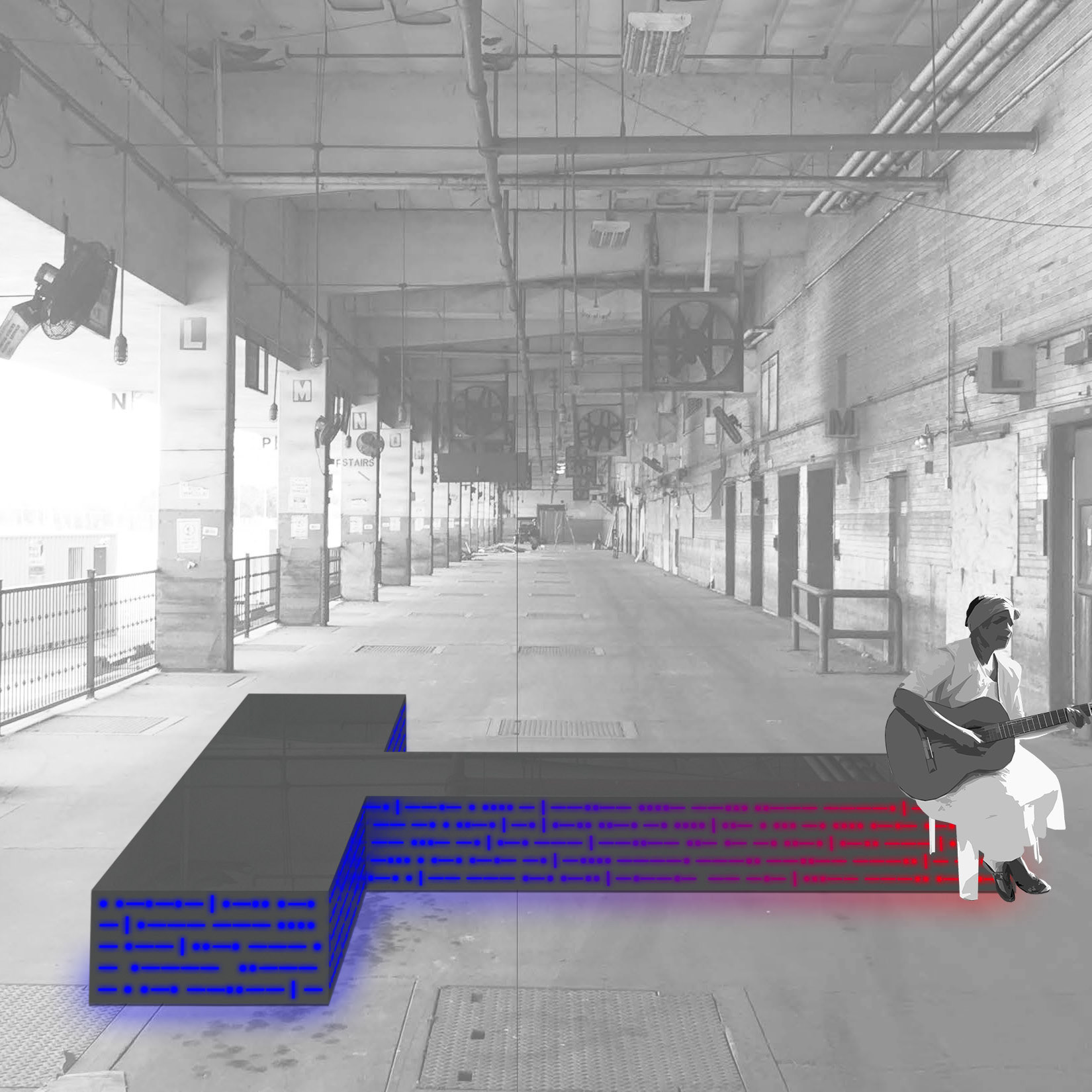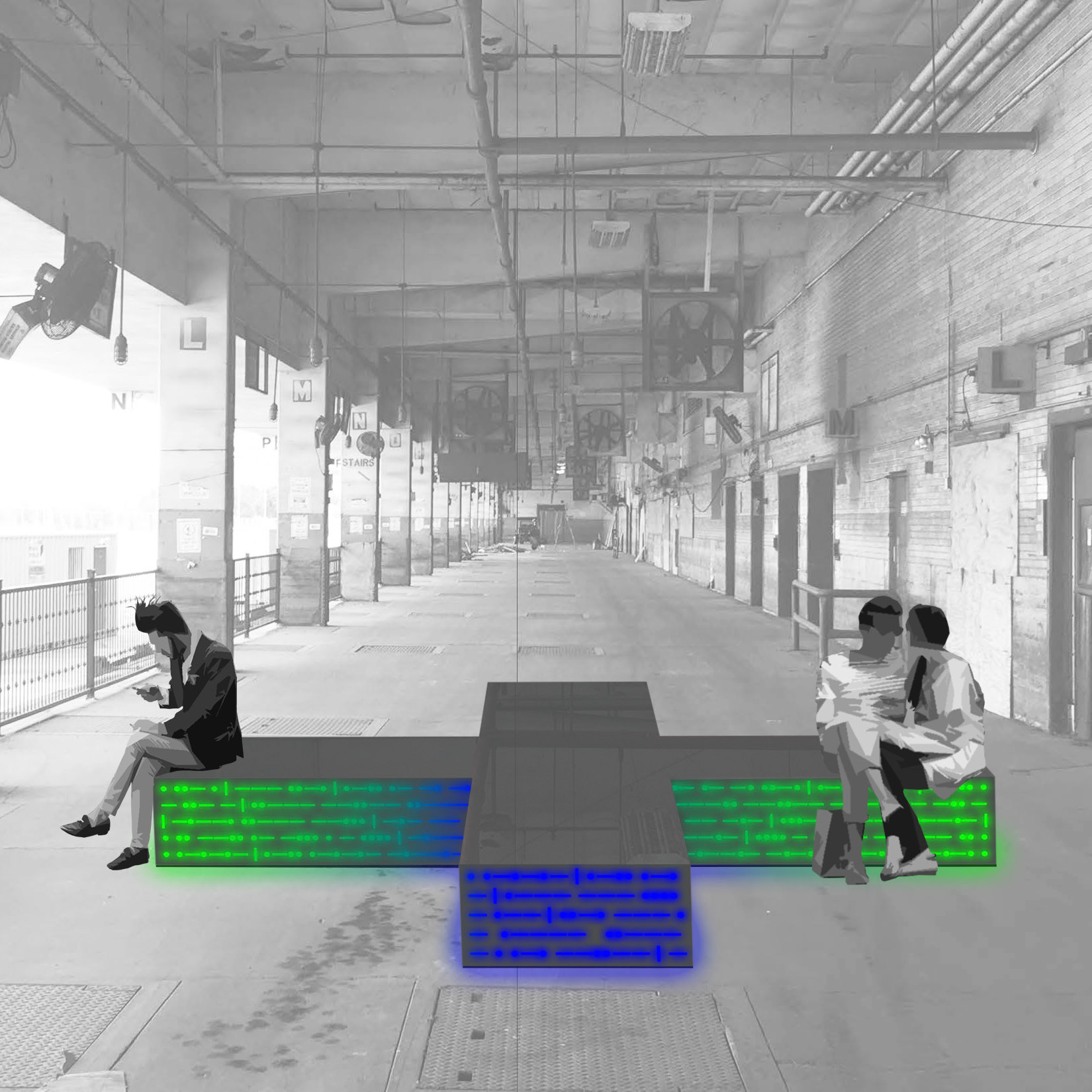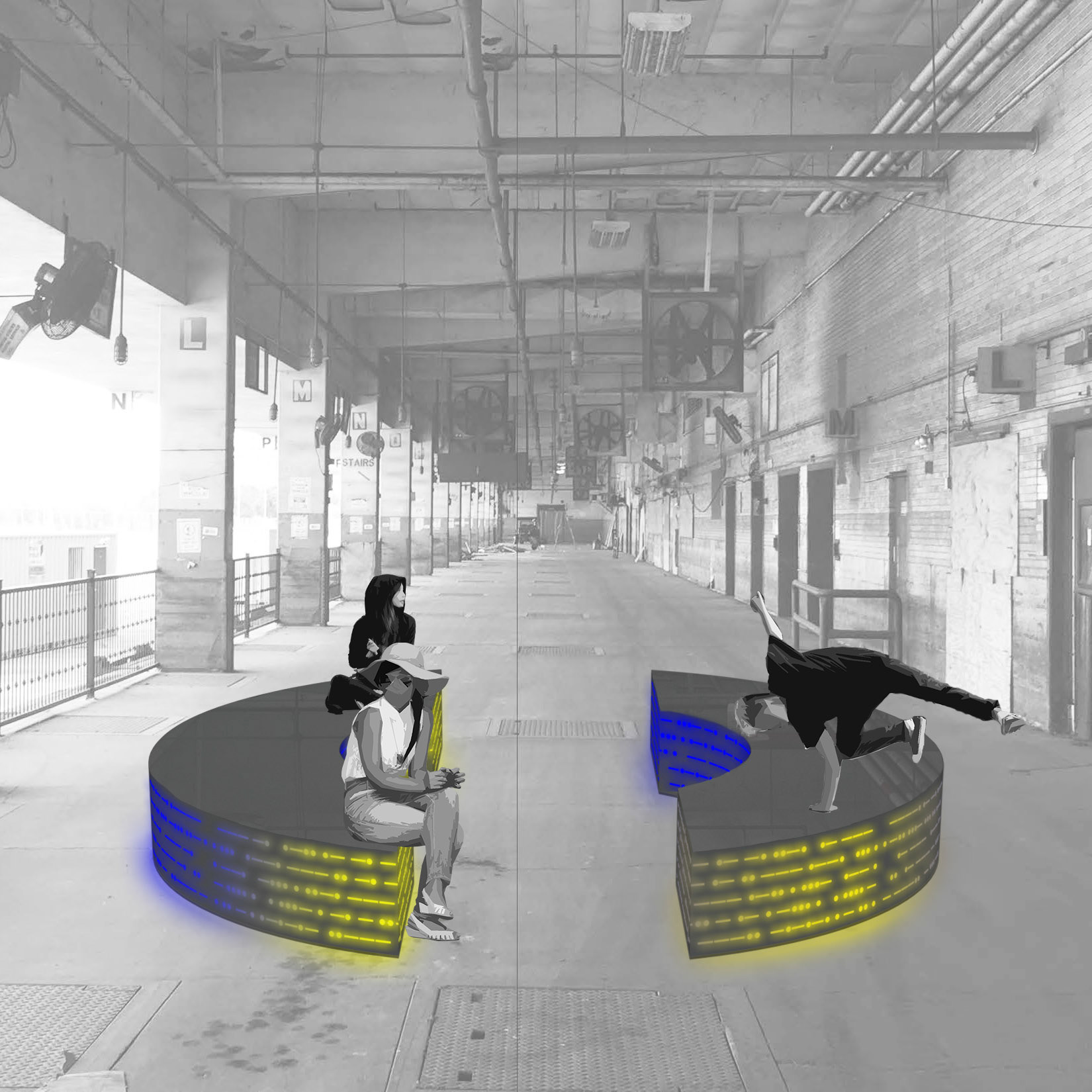This design proposal presents a perforated surface treatment inspired by the history of the Barbara Jordan Post Office and Houston and driven by the conditions of the peculiar situation we are living through today. As users sit on the furniture, the surrounding light changes color, providing a sense of playfulness while also offering a novel approach to the new norm of “social distancing.”
The building sited for the use of the furniture has seen a series of uses and reuses throughout its history. Beginning as the Barbara Jordan Post Office, it functioned as a mail sorting facility in Downtown Houston. During its recent vacant years it offered a venue for annual events such as the Day for Night festival, an electronic celebration of the intersection of art and music. Now, the industrial building is being adapted into a mixed-use civic, cultural, and commercial space for Downtown Houston. This proposal aims to capture the importance of this history and the role it plays in the site’s identity today.
This newly forged identity will inherently be influenced by the conditions of a post-COVID-19 world. With the recent developments of the global pandemic, “social distancing” has become the new normal, new necessity, and new lifestyle for everyone. Current architecture—hospitals, universities, malls, and public spaces—do not support this evolution of the public sphere. Due to worldwide uncertainty regarding how long this situation is going to last, social distancing is now a prime design and operation consideration as public amenities slowly begin to reopen.
The proposal offers a surface treatment for these monolithic steel masses that will respect the limitations of the current global health situation while also embodying the identity of the site and the design approach of OMA for POST Houston. The perforation of lateral surfaces of the masses encodes an account of the history of Houston and the existing building, written in morse code. Morse code, along with the telegraph, was the first form of communication that began to replace paper mail in the mid-nineteenth century. This technological revolution is paralleled by the disuse of the physical building in which POST Houston will be housed as Houston and the world transitions to a digital future. Through the perforations in the steel, an intricate lighting strategy, inspired by the elaborate light shows from the Day for Night festival, combines this technological revival with the newfound need for social distance. LED strips run along the top corners of each mass, emitting a blue light through the grooves in the sides. As users engage with the furniture, whether to sit and eat, read, or rest, capacitive sensors placed under the top surface inform a change in the color of the emitted light, and the light within the furniture surrounding each user changes to a color other than blue. This color change could occur over the currently advised social distance of 6 feet or adapt to future needs and guidelines. Along with being an interactive, installed feature, the illumination creates an encoded social-distancing guide to inform and encourage safe social interaction. This aligns with the POST redevelopment project’s emphasis on lively representation in a cultural, commercial, and colorful context.
The lateral faces of the masses can be perforated or carved using perforation roller technology, or other custom carving methods. The strips of LED lights running along the upper corners of each mass will be electrically wired within and underneath it. Capacitive sensors, similar to those used in phones and touchscreen devices, detect nearby objects that disrupt their electric field, including the human hand or body. These sensors would be placed along an 18-inch-square grid throughout each mass (approximately 25-30 per object), a distribution that will allow for detection of users once they sit down at nearly any spot on the masses. These sensors will be wired to connect with the LED lights through a microcontroller that will initiate the color change surrounding the activated sensors. Other alternatives to capacitive sensors are pressure sensors, which detect the weight of a body or object that bends the metal slightly when a load is applied (this is viable depending on the malleability of the steel), or photoresistors which detect discrepancies in light (this requires the additional perforation of small holes within the top layer of the steel for the photoresistors to be placed in).
While the unfortunate reality of the contemporary world forbids closeness and touch, this proposal puts forth a certain lightness and conviviality by creating impactful and sensorial diversions. The light strategy creates awareness of social distancing guidelines and encourages such behavior while simultaneously refraining from prescribing where exactly users should sit. Rather than a grid of “open” or “available” seats, the design opens itself up to being controlled and interpreted by the user. One can sit anywhere on the mass, which then informs where others sit, how passers-by interact, and the overall atmosphere of the site through the resultant lighting effects.
The next phase of this project includes drafting an account of the former Barbara Jordan Post Office to be mapped onto the lateral surfaces of the masses in morse code, and posted online for users to read. Further, a detailed study of exact logistics of placement and wiring of capacitive sensors with LED strips will be conducted to establish the means by which to install this system. Additionally, the use of a microcontroller will necessitate code that translates the activation of a capacitive sensor into instructions for the LED strip to change color at the associated location.
This project is a collaboration with Juhi Parikh and Andrea Rubero.

